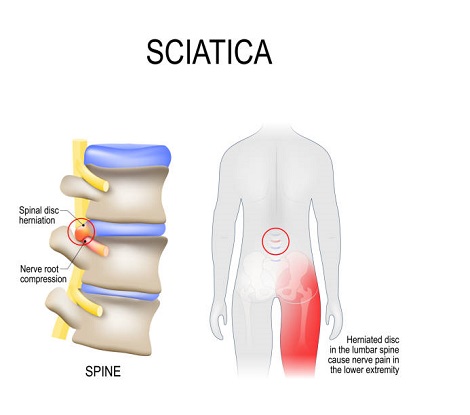"Alleviating Sciatica Pain: Effective Techniques for Relief"
Introduction:
Sciatica, characterized by radiating pain from the lower back down through the leg, can be debilitating. The discomfort arises from compression or irritation of the sciatic nerve, often causing sharp pain, tingling sensations, or numbness. Coping with this condition can be challenging, but various effective techniques and lifestyle adjustments can help alleviate sciatica pain and improve quality of life.
Exercise and Stretching:
Regular exercise is crucial for managing sciatica. Low-impact activities such as walking, swimming, or yoga can strengthen muscles supporting the back and reduce nerve compression. Specific stretches like the pigeon pose, hamstring stretches, or the reclining pigeon can also offer relief by easing tension in the affected area.
Hot and Cold Therapy:
Alternating between hot and cold packs can provide immediate relief from sciatica pain. Applying a cold pack for 20 minutes several times a day can help reduce inflammation, while a heating pad or warm bath can relax muscles and alleviate discomfort.
Maintain Good Posture:
Poor posture contributes to sciatica pain by placing added stress on the lower back. Correcting posture while sitting, standing, or lifting heavy objects can significantly reduce nerve irritation. Using ergonomic chairs or lumbar supports can also help maintain proper spine alignment.
Pain Management Techniques:
Over-the-counter pain relievers like ibuprofen or acetaminophen can offer temporary relief from sciatica pain. However, consulting a healthcare professional for prescription medications or injections may be necessary for severe cases.
Acupuncture and Chiropractic Care:
Alternative therapies like acupuncture and chiropractic adjustments have shown promising results in alleviating sciatica pain for some individuals. These treatments focus on realigning the body and improving nerve function, offering relief without medication.
Ergonomic Adjustments:
Making ergonomic changes in daily activities can prevent exacerbation of sciatica. This includes adjusting workplace chairs and desks to ensure proper posture, using proper lifting techniques, and avoiding prolonged periods of sitting or standing without breaks.
Weight Management:
Excess weight can put additional strain on the spine and exacerbate sciatica symptoms. Maintaining a healthy weight through a balanced diet and regular exercise can reduce pressure on the lower back and alleviate discomfort.
Professional Guidance:
In severe cases or when symptoms persist, seeking guidance from a physical therapist or healthcare professional is essential. They can provide personalized exercises, and manual therapies, or recommend specialized treatments to address the underlying cause of sciatica.
Conclusion:
Living with sciatica pain can be challenging, but implementing these effective techniques can significantly reduce discomfort and improve overall well-being. Consistency and patience are key when trying different approaches, and it's essential to consult healthcare professionals for personalized advice and treatment plans. By incorporating these methods into your daily routine, you can take proactive steps towards managing and alleviating sciatica pain for a more comfortable and fulfilling life.

Comments
Post a Comment